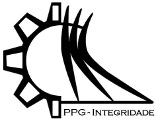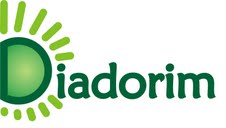CONFIABILIDADE DE PILARES CURTOS DIMENSIONADOS SEGUNDO A NBR 6118:2014 ”“ APRESENTAÇÃO DE UM PROGRAMA COMPUTACIONAL
DOI:
https://doi.org/10.26512/ripe.v2i15.21377Keywords:
Confiabilidade Estrutural. Pilares Curtos. Concreto de Alta Resistência. Normas Técnicas. Programação.Abstract
Os estudos de confiabilidade estrutural via simulação de Monte Carlo exigem um alto número de repetições (simulações) do cálculo da função de desempenho. No caso de pilares de concreto armado submetidos à flexão normal composta o processo de cálculo envolve diversos processos iterativos em cada simulação. Para análise que possuem uma probabilidade de falha na ordem de 10-3 o número de 100.000 simulações é suficiente. Como é objetivo estudar a influência de diversos parâmetros na confiabilidade o número de vezes que o mesmo processo de cálculo é repetido facilmente é superior a dezenas de milhões. A otimização do processo de determinação das probabilidades de falha e de índices de confiabilidade implícitos em normas de projeto é necessária e a criação de programas computacionais é imprescindível. O objetivo deste estudo é demonstrar a criação de um programa para análise da confiabilidade de pilares curtos em concreto armado dimensionados segundo a NBR 6118:2014. A análise da confiabilidade desta norma se justifica pela alteração no seu escopo, que até a NBR 6118:2007 possuía recomendações para o projeto de estruturas de concreto com resistência característica à compressão (fck) entre 30 MPa e 50 MPa (concretos de resistência normal). Na versão NBR 6118:2014 foram incluídos os concreto com fck entre 55 MPa e 90 MPa (concretos de alta resistência) que possuem comportamento estrutural diferente.
References
Aïtcin, P. C., 2000. Concreto de alto desempenho. Pini.
Ang, A. H. E Tang, W. H., 1990. Probability Concepts in Engineering Planning and Design ”“ Decision, Risk and Reliability. Vol. II, John Wiley & Sons. EUA.
Associação Brasileira de Normas Técnicas, 2014. Projeto de Estruturas de Concreto ”“ Procedimento (ABNT NBR 6118:2014).
Associação Brasileira de Normas Técnicas, 2007. Projeto de Estruturas de Concreto ”“ Procedimento (ABNT NBR 6118:2007).
Associação Brasileira e Normas Técnicas, 2015. Concreto ”“ Preparo, Controle e Recebimento. (ABNT NBR 12655:2015).
Banks, J., Goldsman, D. E Carson, J.S., 1990. Computer Simulation, Statistical Methods for Engineers and Scientists, ed. H.M. Wadsworth, pp. 12.1-12.36.
Diniz, S. M. C., 2008. Structural Reliability: Rational Tools for Design Code Development. ASCE.
Diniz, S. M. C., Frangopol, D. M., 1997. Reliability Bases for High-Strength Concrete Columns. Journal of Structural Engineering, ASCE, 123(10).
Diniz, S.M.C., Nogueira, H.A.T., 2008. NBR 6118 and High-Strength Concrete Columns: Designing for Safety beyond 50 MPa, 8th International Symposium on Utilization of High-Strength and High-Performance Concrete, Tokyo, Japan Concrete Institute.
Gomes, H. M., Awruch, A. M., Rocha, M. M., 1997. Análise da Confiabilidade no Projeto de Estruturas de Concreto Armado. Jornadas Sul-Americanas de Engenharia Estrutural, São Carlos, pp. 99-108.
Ibrahim, H. H. And MacGregor, J. G., 1997. Modification of ACI Rectangular Stress Block for High-Strength Concrete, ACI Structural Journal, Vol. 94.
Mirza, S. A., MacGregor, J. G., 1989. Variability of Mechanical Properties of Reinforced Bars. Journal of Structural Division, ASCE.
Mirza, S. A., Skrabek, B. W., 1991. Reliability of Short Composite Beam-Column Strength Interaction. Journal of Structural Engineering, ASCE, 117(8), 2320-2321.
Ozbakkaloglu, T. E E Saatcioglu, M., 2004. Rectangular Stress Block for High-Strength Concrete, ACI Structural Journal, V.101, No 4.
Szerszen, M.M., Nowak, A.S., 2003. Calibration of Design Code for Buildings (ACI 318): Part 2 - Reliability Analysis and Resistance Factors, ACI Structural Journal, ACI, 100(3).
Thorenfeldt, E., Tomaszewicz, A., Jensen, J.J., 1987. Mechanical Properties of High Strength Concrete and Application to Design. Proceedings of the Symposium: Utilization of High-Strength Concrete, Stavanger, Norway, pp. 149-159.
Downloads
Published
Issue
Section
License
Given the public access policy of the journal, the use of the published texts is free, with the obligation of recognizing the original authorship and the first publication in this journal. The authors of the published contributions are entirely and exclusively responsible for their contents.
1. The authors authorize the publication of the article in this journal.
2. The authors guarantee that the contribution is original, and take full responsibility for its content in case of impugnation by third parties.
3. The authors guarantee that the contribution is not under evaluation in another journal.
4. The authors keep the copyright and convey to the journal the right of first publication, the work being licensed under a Creative Commons Attribution License-BY.
5. The authors are allowed and stimulated to publicize and distribute their work on-line after the publication in the journal.
6. The authors of the approved works authorize the journal to distribute their content, after publication, for reproduction in content indexes, virtual libraries and similars.
7. The editors reserve the right to make adjustments to the text and to adequate the article to the editorial rules of the journal.









